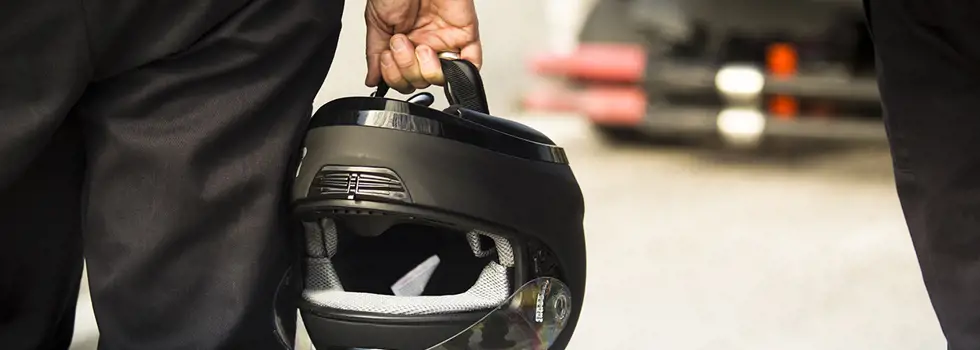Last month, Kennedys hosted an exclusive afternoon with Billy Monger, also known as Billy Whizz, a successful young British driver with race-winning success in Ginetta Junior and British F4, to talk about his accident, rehabilitation and life afterwards.
In this article, we delve into Billy’s story, and discuss some key takeaways for claims professionals in relation to amputee rehabilitation.
The accident
After making contact with a stationary car at over 120mph during a British F4 race on 16 April 2017, Billy suffered catastrophic injuries. He was placed in an induced coma in order to remove him from the car, airlifted to hospital and underwent an above knee amputation on his left leg and below knee amputation on his right leg.
Rehabilitation
Billy’s clinical lead explained from the start to his family and friends the importance of both physical and psychological recovery, and how significant their reactions, outlook and emotional support would be to Billy’s recovery. He was therefore helped psychologically by being surrounded by positive messages about the future.
With that backing from his family and friends, Billy quickly turned his attention to rehabilitation. His positive upbeat attitude allowed him to “flip the narrative” to concentrate on what he could rather than could not do.
After a fortnight in hospital, Billy was discharged home where he received half an hour of physiotherapy each day. However, Billy continued to challenge himself by undertaking as much physical reconditioning as possible, with a view to speeding up the recovery process. Again, he was supported by a close friend and they did home workouts together in between formal therapy sessions.
The ultimate goal was to get back to racing. Remarkably, Billy was back behind the wheel only three months post-accident and racing again 11 months post-accident.
Prosthetics
Regaining the highest possible level of independence and functionality was crucial to Billy. Thanks to crowdfunding by his racing team, he was able to focus on exploring high specification prosthetics at an early stage in his rehabilitation.
Billy currently uses an Ottobock Genium X3 knee prosthesis and carbon fibre foot/ankle prosthesis on his left leg, attached using sockets and vacuum liners. On his right leg he uses a carbon fibre prosthesis. As well as his day-to-day prosthetics, he has a bespoke prosthetic which he uses when racing. The prosthetic absorbs braking forces and reducing pressure on the residual limb.
Post-recovery
Billy succeeded in persuading the FIA, the governing body of motor sport, to change its safety rules so that amputees can race in single-seater cars. In September 2018, Billy returned to Donington Park, the same track where his accident took place. He achieved two pole positions and a podium finish in the last race.
The determination and perseverance that propelled Billy’s return to the track was also displayed in ‘Billy’s Big Challenge’ for BBC Comic Relief when he raised over £3 million by completing a 140 mile walking, cycling and kayaking triathlon. He is also now a TV personality and commentator for F1.
Key takeaways
It is still not a common occurrence for compensators to have the opportunity to speak directly to an individual about their life-changing injuries. As such, we would like to thank Billy for joining us to discuss his accident, rehabilitation and plans for the future.
Below we offer a number of takeaways for compensators who are funding amputee rehabilitation:
- Psychological support - Looking back, Billy believes that one of his primary sources of strength came from the unfaltering support that he received from family and friends. From a claims perspective, we would encourage compensators to be open-minded to requests for privately-funded counselling for family members, especially during the acute rehabilitation phase where a positive support network can play a key part in determining a patient’s state of mind and, ultimately, the success of their recovery.
- Peer networks - Billy explained how having contact with others who had been through a similar experience was an important motivator. Alex Zanardi, an F1 driver who underwent a double amputation as a result of a crash in 2001 and returned as a touring car racer, provided advice, guidance and support to Billy.
- Military rehabilitation model – Billy was helped enormously by having a training partner to push him. He spoke about how impressed he is by the military model, where patients receive intensive multi-disciplinary rehabilitation in a residential setting and benefit psychologically from the group dynamic and from supporting each other in their recoveries. Compensators and case managers can seek to replicate a similar team approach in their rehabilitation prescriptions.
- Early access to prosthetics – Billy explained that, as a young amputee, he was understandably focussed on accessing the best prosthetics as quickly as possible. He was prepared to invest his own crowdfunding in a private provider. Compensators may therefore wish to fund early trials of higher specification limbs in order to maximise quality of life and provide a reliable indication of future lifestyle and prognosis for claim purposes.
An afternoon with Billy Monger

 United Kingdom
United Kingdom